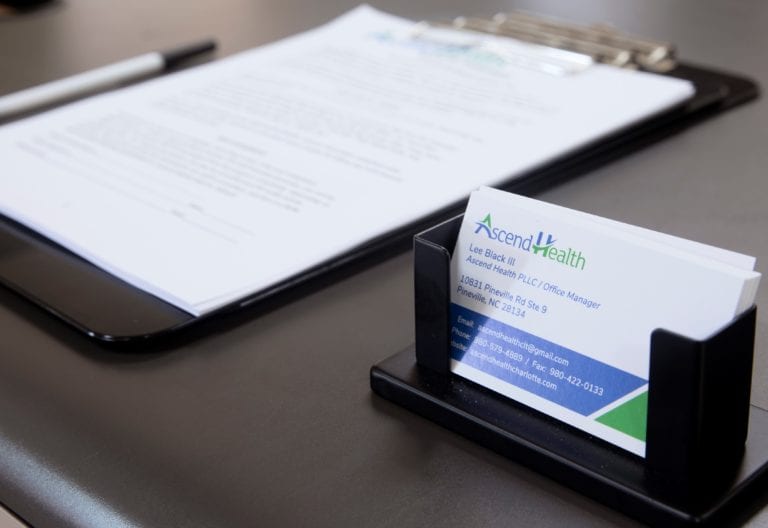Opioid addiction is a serious problem in the United States, and it’s not getting better. In fact, it’s getting worse. According to the Centers for Disease Control and Prevention (CDC), between 1999 and 2017, opioid addiction overdose deaths increased by 300%. In 2020 alone, there were over 68,630 opioid-related deaths in the United States—more than any other year on record.
The good news is that there are medications available to help treat opioid addiction. These medications are called “medications-assisted treatment” or MAT. They work in combination with counseling to help people recover from opioid use disorder (OUD).
In this article, we’ll discuss some of the most common medications used in MAT programs and how they work. We’ll also include information about how long you can expect your recovery program to take and what you can do to get started today!
1) Suboxone
If you’re struggling with opioid addiction, Suboxone can help.
Suboxone is a medication that helps people recover from opioid use disorder (OUD). It’s a combination of buprenorphine and naloxone. Buprenorphine is an opioid partial agonist—it works like an opioid but only partially activates the receptors in your brain. Naloxone blocks other opioids from activating your opioid receptors, which prevents them from producing a high.
Suboxone is used to treat moderate to severe pain in patients with OUD, as well as long-term maintenance therapy for patients who have already been through treatment and are looking to stay clean. It can also be used to help prevent withdrawal symptoms when someone discontinues the use of other opioids.
Suboxone should always be taken under the direct supervision of a healthcare professional, who will monitor how well it’s working for you over time and adjust the dosage accordingly.
2) Vivitrol
Vivitrol is a form of naltrexone, which is an opioid antagonist. An opioid antagonist is a drug that blocks the effects of opioids like morphine and heroin. It’s given in the form of a shot and is usually administered by a doctor or nurse.
The way Vivitrol works is by blocking receptors in the brain that would otherwise be activated by opioids. It does this by binding to those receptors and preventing them from being able to accept other drugs that activate them, such as heroin. This prevents individuals from getting high on heroin or similar substances while they’re using Vivitrol.
In addition to helping individuals avoid getting high on drugs like heroin or fentanyl when they’re not using them, Vivitrol also helps prevent withdrawal symptoms when people are trying to get off of these substances altogether—if you’ve ever been through withdrawal yourself, then you know how horrible it can be!
If you’re looking for an effective way to help someone stop abusing opioids, then Vivitrol might be just what you need!
3) Zubsolv
Zubsolv is a medication that’s prescribed to help people who are addicted to opioids. It’s a combination of buprenorphine and naloxone, and it works by providing the same kind of pain relief that an opioid does, but without producing the same level of euphoria—which means that it can help people to kick their addictions without getting them high.
The most common way that Zubsolv is used is as part of a treatment plan known as MAT (medication-assisted treatment), which combines behavioral therapy with medications like Zubsolv in order to help a person recover from addiction.
Because Zubsolv isn’t addictive itself, there’s no risk of withdrawal symptoms when you stop taking it—the only thing you’ll feel is the absence of withdrawal symptoms. That means that when you’re ready to stop using Zubsolv, your body will be able to adjust quickly without any significant side effects or symptoms.
4) Sublocade
When it comes to treating opioid addiction, Sublocade is one of the best medications on the market. This medication works by delivering buprenorphine sublingually, which means that it is absorbed directly into the bloodstream via the mucous membrane in your mouth. This prevents you from having to absorb it through your gastrointestinal tract like you would if you took a pill or used a nasal spray.
The main advantage of this is that Sublocade has a lower risk of side effects than other opioids. You won’t experience nausea or constipation as frequently as you would with other medications. It’s also easier for doctors to titrate your dosage up or down because there are no peaks or valleys in how quickly it gets into your system compared to other treatments. And while Sublocade can cause some dizziness and sleepiness, those side effects are typically mild and don’t last very long (around 4-6 hours).
Ultimately, Sublocade is an excellent option for those who want to manage their opioid dependence without having to worry about getting sick from other medications or experiencing any unpleasant side effects during treatment.
5) Methadone
Methadone is a synthetic opioid that has been used as a pain reliever for years. It is also an important medication in the treatment of opioid addiction. Methadone works by binding to the same receptors that opioids bind to, but it does so more slowly and with less intensity than heroin or other drugs. This means that methadone can reduce cravings and prevent withdrawal symptoms without causing euphoria or other side effects.
Methadone is most often administered by a healthcare professional, but it’s not typically given as part of addiction treatment. Instead, patients have been prescribed methadone in place of heroin or other illegal opioids, which helps them avoid withdrawal symptoms while they’re trying to recover from addiction.
Instead of taking the medication on its own, patients usually take methadone in combination with other medications like buprenorphine (Subutex) or naltrexone (Vivitrol). These combinations can help individuals stay off of heroin long enough for their bodies to adjust to life without it—which can take anywhere from several months to several years, depending on how long they’ve been addicted and how much tolerance they’ve built up over time.
The Conclusion
Opioid addiction is a serious problem in the United States, and it’s getting worse. Thankfully, there are medications available to help people recover from this type of addiction. These medications, known as medication-assisted treatment (MAT), work in combination with counseling and other forms of support to help individuals get sober and stay that way.
Some of the most common medications used in MAT programs include Suboxone, Vivitrol, Zubsolv, Sublocade, and Methadone. Each of these medications works differently, but all are designed to help individuals recover from opioid use disorder (OUD) and maintain their sobriety.
If you or a loved one are suffering from addiction or substance abuse, please contact us today. We are here to help you along the way, and throughout your road to recovery.



